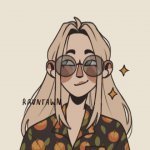Search the Community
Showing results for tags 'blog post'.
-
Hi Guys!! I am from Blue Bubble (We call it Glenpavia!) and my name is Ana. I just want to tell you guys a little bit about my country's history around Independence Day as IDK if anyone else understands it?? IDK if anyone is taught this, but its like really important to me so here we go: On the 15th August 1091, Glenpavia was finally liberated from Giovannilandian rule. This was done over the previous 3 years after the eastern side of the island revolted and separated from the empire. To understand how this happened, You need to know a little bit of the history of Glenpavia. At the same time as the height of the Lavandulan’s empire, there was a minor invasion to the south west of the island. These people were travellers by nature, crossing land and ocean to see what is out there. Over the following centuries, the Glendora people who stayed on the island lived and interacted with Lavandulans, becoming a small but growing clan of Glendulans. The clan took land that the empire did not want to the south-west and soon grew into a nation which did not fight with the empire but had friendly relations. The modern day Glenpavia language is a mix of the native language of the clan and of Lavandulan. Following the breakdown of the empire, the people of Glendula divided into the north and the south with a civil war which was still being fought through a Cold War at the time of Giovanniland's conquest. The northern clan allowed conquest quickly in the belief the empire would help the side win, but the south resisted for 4 more years before admitting defeat. During the time in the empire, Glendula culture was suppressed, and many families were forced to take on Giovannese names to protect themselves from prosecution. From 1011, those of Glendula heritage began protesting the oppression, and began a movement of expression. Although minor efforts of Empress Nima III allowed restrictions to easen, the Glendulan people were angry. It was during the rule of her son, Paldeno, where the ambition to become one nation became ahead again. Records document a record movement of Glendulans to what is now the nation of Glenpavia during this time, as historical documents show a large underground rebellion network. The Glenpavian Group (AKA the rebelion name of the Glendulans) first rebelled in 1090, but did not succeed. In 1091, the rebellion resurfaced and kept up the revolt until Emperor Petro I signed over the land of Glenpavia to Tsiory Amin, one of the main leaders of the rebellion and chosen first Mpitarika of Glenpavia. This moment in history is often documented with a lot of celebration, but also terror for those of Giovannese nationality in the new nation. After the declaration of freedom, there was a month of mass movement of those who had been in the region but was not of Glendula heritage, as those who stayed faced discrimination. Since these turbulent times, the mark of independence has become a majority positive thing for Glenpavia, with communities coming together to mourn the lives lost and celebrate their continued freedom. We have adopted the Glenpavia name to describe our people and our culture as a result of our relations, and we are very passionate about our history. Independence Day starts 2 days before, with a day of mourning. There is often a minute of silence, and memorials across the nation are decorated. The schools and workplaces are often not in for the day of mourning, and do not go back until the day after Independence Day. Adults have Independence Day as a day of national rest as well. The middle day is the day of change, where we take time to change something in our lives, normally a redecoration of our homes. Some opt for a change of looks, some may go for a change in social life. There are often posts on social media of major changes people may make on this day. The actual day of Independence is a day of celebration, with major parties in town centres. There is free food, dancing, drinking, and everyone gets dressed up. Towards the nighttime, some places have fireworks too. The Mpitarika has a big speech which everyone watches. This year, Kassakira Petrovikan spoke about the topic of showing off our national pride and culture, and it spoke a lot to me. That’s why I am writing this blog. And totally not because this was also a history assignment. If you have any questions, I will try and answer them <3 I hope my common is okay!! Posted by Ankizivavy at 00:13 UTC, 28/10/1421


